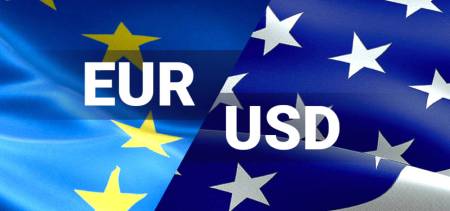
Selling pressure on the Euro (EUR) against the US Dollar (USD) intensified following the release of lackluster Purchasing Managers Index (PMI) data for both the Eurozone and Germany. As a result, EUR/USD retreated to the vicinity of 1.0600, after briefly reaching levels just below 1.0700 earlier on Tuesday. On the other hand, the US Dollar (USD) managed to regain some stability and rebounded from four-week lows around the 105.40 range in terms of the USD Index (DXY). This recovery was supported by a slight increase in US yields and a loss of momentum in risk sentiment. With regards to monetary policy, participants foresee the Federal Reserve (Fed) maintaining its present stance of leaving rates unchanged at the November 1 event. This perspective was reinforced by remarks from Fed Chair Jerome Powell during his appearance at the Economic Club of New York last week.
Concurrently, investors are contemplating the potential of the European Central Bank (ECB) discontinuing its tightening cycle. This occurs in spite of inflation levels surpassing the bank’s target and developing concerns regarding the risk of an economic slowdown or stagflation in the eurozone’s economy. In the domestic calendar, Consumer Confidence in Germany tracked by GfK worsened to -28.1 for November. Still in Germany, flash Manufacturing and Services PMI came in at 40.7 and 48.0, respectively, for the current month. In the broader eurozone, those gauges came in at 43.0 and 47.8, respectively. Across the pond, US flash Manufacturing and Services PMIs for the current month are also in the pipeline.
EUR/USD runs out of steam near the key round level of 1.0700 on Tuesday, sparking a marked corrective decline sponsored by discouraging results from the euro calendar. If the bullish trend continues, EUR/USD may challenge the transitory hurdle at the 55-day Simple Moving Average (SMA) at 1.0702 prior to the September 20 high of 1.0736 and the important 200-day SMA of 1.0816. A break above this level might signal a push to the August 30 top of 1.0945, just ahead of the psychological mark of 1.1000. Any more gains might re-establish a challenge to the August 10 peak of 1.1064 before hitting the July 27 high of 1.1149 and possibly the 2023 top of 1.1275 seen on July 18. If the selling trend resumes, there is immediate support around the October 13 low of 1.0495, which is just ahead of the 2023 low of 1.0448 from October 3, before the round level of 1.0400. If this zone is breached, the pair could slip back to weekly lows of 1.0290 (November 30, 2022) and 1.0222 (November 21, 2022). As long as the EUR/USD continues below the 200-day SMA, the possibility of continuous bearish pressure exists.
